Benchmarks: CrystalDiskMark 3.0
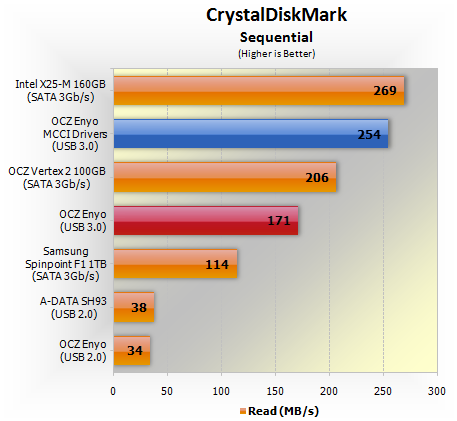
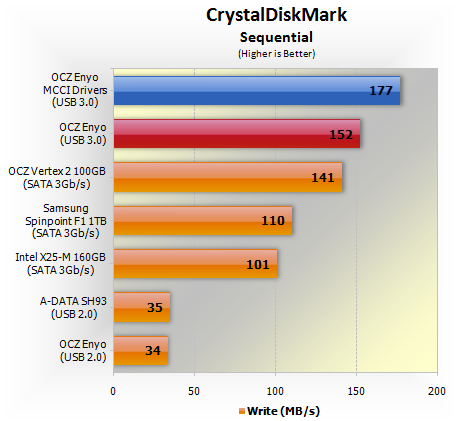
The CrystalDiskMark sequential benchmark was used to measure the drive's read and write performance. As you can see, the OCZ Enyo again performs much better with the MCCI drivers installed, as the sequential read performance was improved by 49% from 171MB/s to a much more impressive 254MB/s. This boost made the Enyo faster than the Vertex 2 by quite a margin, but it wasn't enough to outclass Intel's X25-M at 269MB/s.
The Enyo was just over 2x faster than a traditional hard drive using the SATA interface and a whopping 6.5x faster than a traditional USB 2.0 storage device. During sequential write tests the Enyo, believe it or not, was just as impressive against its competition. With a transfer rate of 177MB/s, this portable storage device left every other contender in the dust, with a 1.5x performance advantage over a traditional hard drive and being as much as 5x faster than a USB 2.0 storage device.
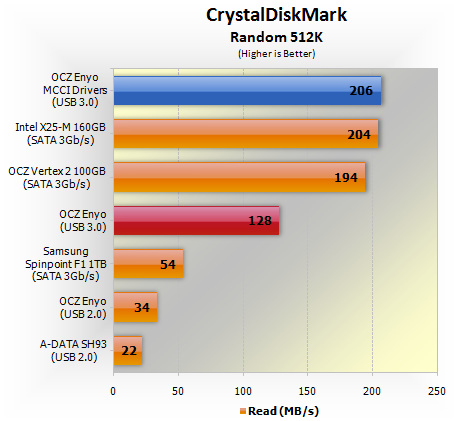
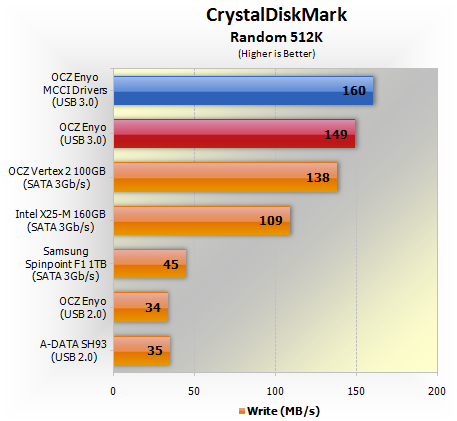
The random 512K CrystalDiskMark test also puts the OCZ Enyo in a pretty good place, especially when using the supplied MCCI driver. The Enyo sustained 206MB/s when measuring read performance and 160MB/s when measuring write speed. This made OCZ's portable drive faster than the Intel X25-M and OCZ Vertex 2 SSDs in both tests.
The OCZ Enyo was also 3.5x faster than a conventional hard drive during writes and almost 5x faster than a typical USB 2.0 storage device. If that wasn't impressive enough, when looking at the read performance we found that the Enyo was almost 4x faster than a conventional hard drive and a staggering 9x faster than a typical USB 2.0 storage device.
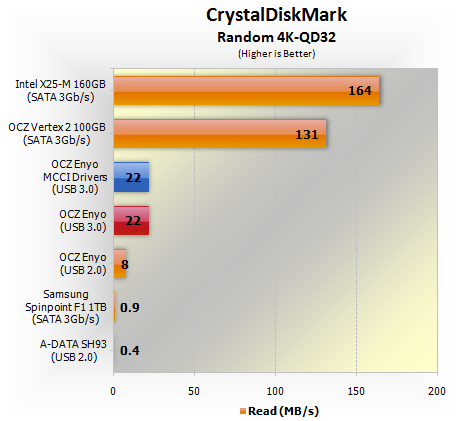
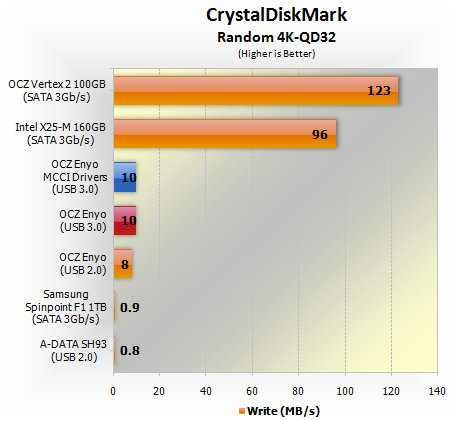
Unlike the VIA VL700 USB 3.0 to SATA controller, we don't believe that the Symwave SW6315 supports NCQ (Native Command Queuing) technology. As a result the CrystalDiskMark random 4K queue depth 32 test results are rather unimpressive. The OCZ Enyo is limited to just 10MB/s in this test, while it was capable of 8MB/s when using the USB 2.0 bus. Although these results might look impressive when compared to a traditional hard drive, they are far from it next to today's high-speed internal SSD devices designed to use the SATA interface.